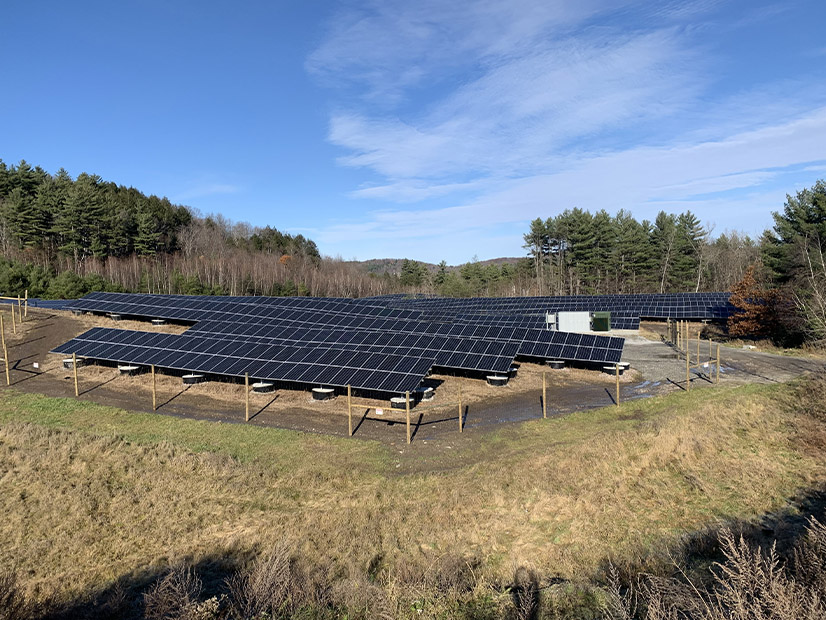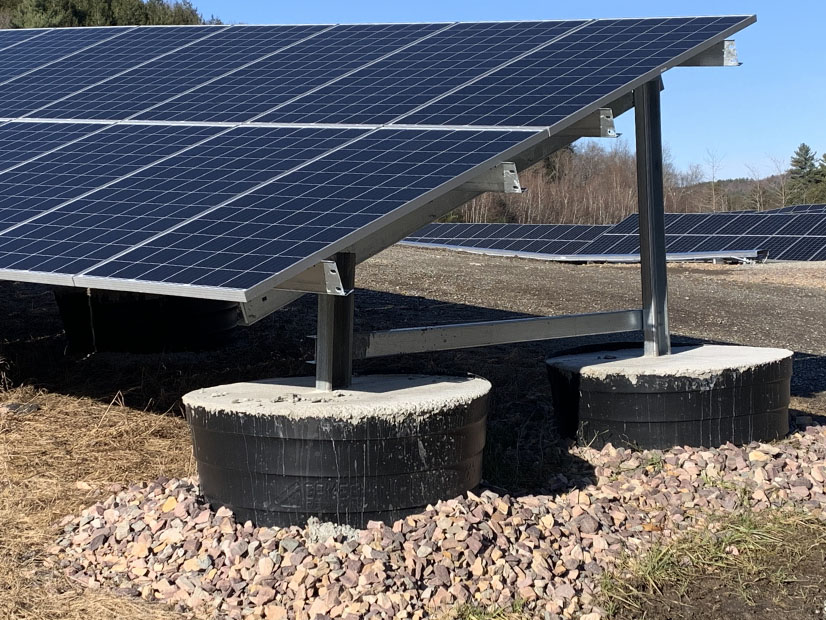
Two recently completed solar projects in rural Vermont demonstrate how one developer overcame higher development costs for brownfield sites to help meet state environmental and clean energy objectives.
Burlington-based Encore Renewable Energy built a 2.2-MW solar project on a closed landfill and a 2.3-MW project on a former gravel pit in Jericho, Vt.
“By using these otherwise underutilized or undevelopable pieces of property, we’re essentially preserving additional greenfield space,” Encore founder and CEO Chad Farrell told NetZero Insider. “In Jericho, that could be conservation to maintain the most carbon sequestration possible or that can be housing or other commercial or agricultural land use.”
Both brownfield projects were challenging, but building a solar array on a landfill has an additional level of complexity from a permitting perspective that also affects project costs, Farrell said.
To build on a capped landfill, a developer must assure regulators that construction will not harm the environmental remediation already approved for the property. That remedy, Farrell said, can be a soil cap, and it might include a geomembrane between the waste and the cap. “We have to demonstrate that we’re not going to cause any additional erosion … or settlement.”
Adjusting construction to accommodate the environmental needs of the landfill affects the project timeline and labor needs, which makes it more expensive to develop than other projects, according to Farrell.
On other sites, construction vehicles can drive onto the property with installation equipment, but that’s not possible with a landfill. “We have to use smaller Bobcat rigs that have lower weight and lower tire or track pressure, and that just takes a lot more time.”

In addition, foundation posts, which typically sit 6 to 8 feet into the ground, cannot penetrate the 3-foot soil cap. And the cap wouldn’t have the stability needed for structures to withstand high wind forces.
For landfills, Encore uses ballasted foundations that Farrell said have enough weight to distribute the downward force of the panels over a wide area. Foundations at the Jericho site, he said, are prefabricated tubs that were filled with cement in the field.
Incentives Needed
With higher overall development costs comes a higher price per kilowatt-hour, which makes developing brownfields a significant market challenge.
In the case of the Jericho landfill, however, the local utility wanted to work with the community and bring the clean generation into one of its higher demand centers.
“Vermont Electric Cooperative was willing to sign on to a slightly higher [power purchase agreement] price for the landfill project in order to meet the town’s objectives of reusing that site, while also addressing their requirements under Vermont’s renewable energy standard.”
By pairing the landfill and gravel pit projects, Encore was able to achieve economies of scale and bring down the overall PPA cost to the utility, according to Farrell.
The dynamics that moved the Jericho arrays forward to completion would not be possible for all the developable landfills in the state.
“If the only projects that are selected in any kind of statewide selection process are all about the lowest per-kilowatt-hour price delivered, landfills can’t compete,” Farrell said.
Brownfields, carports and rooftops are statutorily defined in Vermont as preferred sites.
“That’s where the general public would like to see these generation assets,” Farrell said. “We have to do a better job of incentivizing these types of projects.”
The Vermont Climate Council’s recently adopted Initial Climate Action Plan calls for incentivizing solar development in “already altered locations” and discouraging siting new generation in “intact ecosystems.” It also calls for regulators to design a 100% renewable energy standard by 2030. Farrell is a legislatively appointed council member. (See Vt. Climate Council Adopts ‘Initial Climate Action Plan’.)
Landfills can only be one part of what Farrell sees as “multiple tranches” for solar development to help meet the state’s energy and environmental goals. Some landfills are challenging in terms of scale and topography, he said.
“Older municipal dumps often were only 1 or 2 acres, and they were built like a mound of trash, so they have excessive slope for us to be able to deliver even the ballasted racking projects,” he said.
That means the state needs a “mix and match” approach for the size of sites and projects it authorizes, he said. In addition to residential- and commercial-scale projects, and medium-scale brownfields, Farrells said Vermont needs 5-MW and larger facilities that might require 30 acres of open space, for example.
The large projects are “where we can really deliver solar at the lowest price points possible, which, in consideration of ratepayer impact, has to be part of the discussion,” Farrell said.

